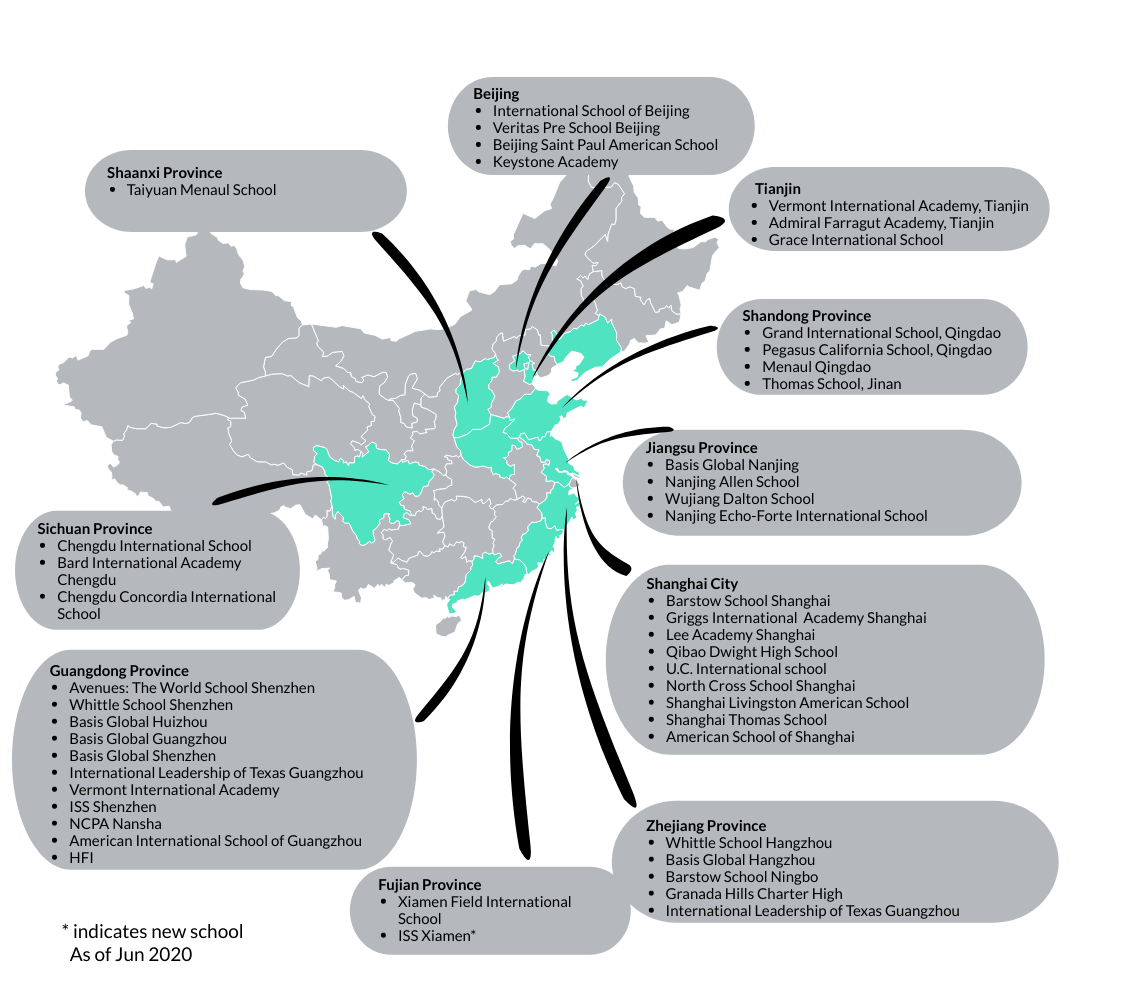China Education Design and Construction
China’s end users of the design and construction market for education facilities (including building materials) experience local competition and challenges for U.S. schools and organizations.
With over 150 million K12 students, China has the world’s largest basic education market. The number of international school students grew from 96,000 in 2010 to an estimated 326,000 in 2020. With the increase in school-aged students and increasing demand for overseas college education, there is great potential for future growth.
The market for international schools in China’s first tier cities is highly competitive. Approximately 70% of the top 100 international schools are located in Beijing, Shanghai, Shenzhen and Guangzhou, according to the Hurun Education Top International Schools in China 2020 report. However, development of new schools is increasingly prevalent in second tier cities such as Suzhou, Wuhan and Chengdu.
Opportunities:
- Rapid expansion of new international schools in China, with a market size exceeding $11.4 billion as of 2019, according to Dingsi Top Schools’ assessment of development costs and tuition fees.
- There were 60 international schools added in 2019, and over 90% of those schools were newly built.
- Beijing municipal government plans to build 10 new international schools from 2020 to 2022.
- More British and American education groups entering the market.
- Chinese parents’ increasing demand for “green schools.”
- Most private school construction or expansion opportunities are still awarded through a public procurement process.
The map below shows the locations of K12 schools with U.S. partnerships in China.
Investment characteristics of Chinese international schools:
- Investment is still dominated by the “real estate + education” model, in addition to government investment and brand introduction.
- Corporate entities are increasingly investing in and operating international schools.
- In terms of teaching methods and curricula, international schools are more inclined to integrate both Chinese and western practices, creating differentiated offerings that meet the needs of consumers.
Challenges:
Qualifications of Architectural Design Firms:
Certifications are required for architectural design firms conducting business in China.
Many foreign firms face difficulties obtaining such certifications and work with Chinese partners to meet this requirement.
Competition from Domestic and Other Countries:
U.S. firms face fierce competition from Chinese firms and other foreign companies, especially those with a British curriculum.
Most building construction projects were halted due to the COVID-19 outbreak, hindering first quarter revenue in 2020. In response, the Chinese government has allowed the issuance of special debt funds.
Best Prospects:
Design of new schools, including main campuses and individual facilities, such as stadiums and libraries
Education technology
Management and Consulting Services
- U.S.-style school affiliations and accompanying management and consulting services
- School management and professional services
- Curriculum design and academic support
- Assessment and qualification of schools
Building Materials
- Green building materials
- Materials for school facilities, including multi-media facilities, laboratories, buildings and housing, athletic facilities and furniture
To learn more, contact us at: Designconstruction.China@trade.gov.
Resources:
Key Organizations: · The China Association for Non-Government Education · China Education Association for International Exchange · New School Insights · Topschools · BEED
Major Trade Shows:
RAISE2020 Asia International School Expo, Oct 31-Nov 2, Shanghai
New School Insight 2020 International School Expo, Nov 21-22, Beijing
The 12th Asia School Construction and Facilities Exhibition/Conference – BEED 2020, Dec 9-10, Guangzhou
